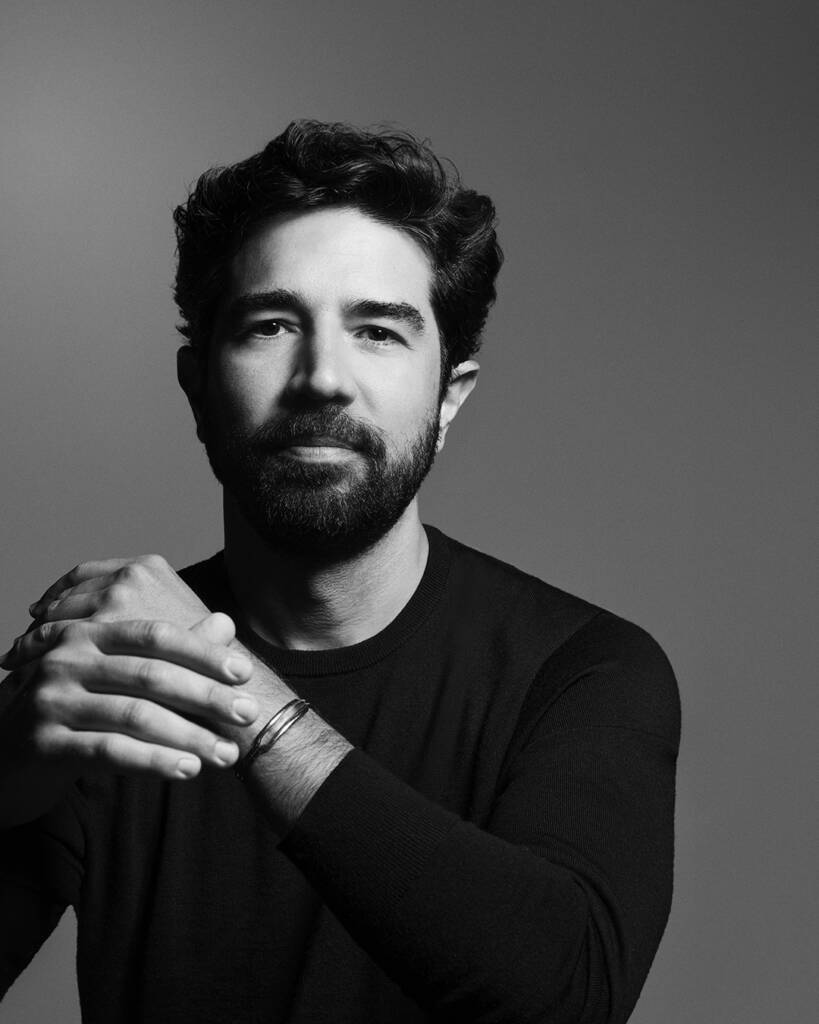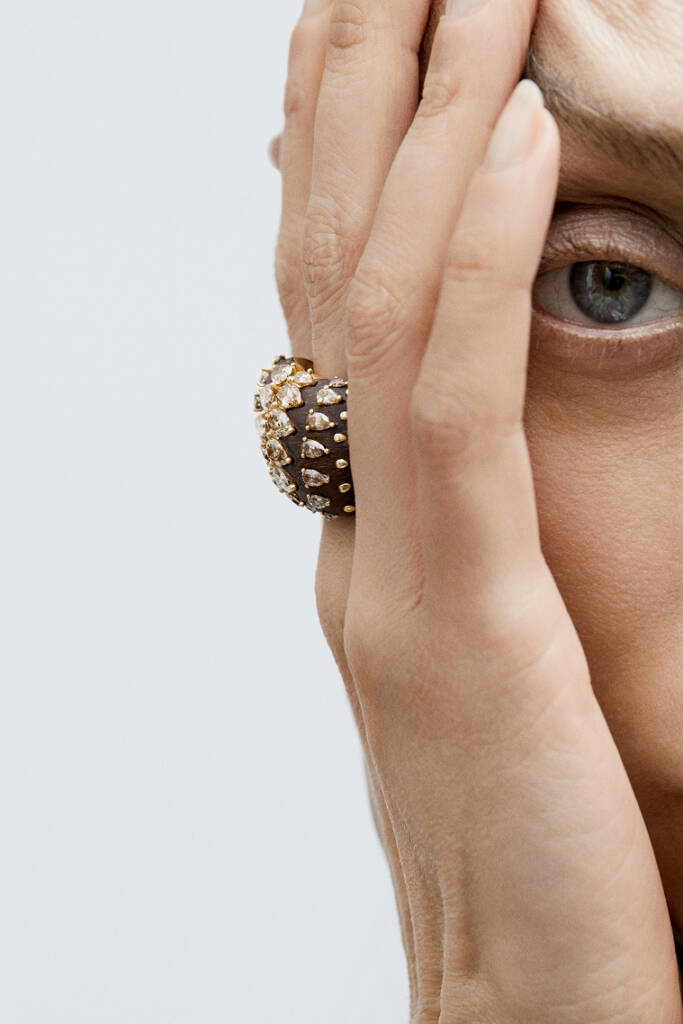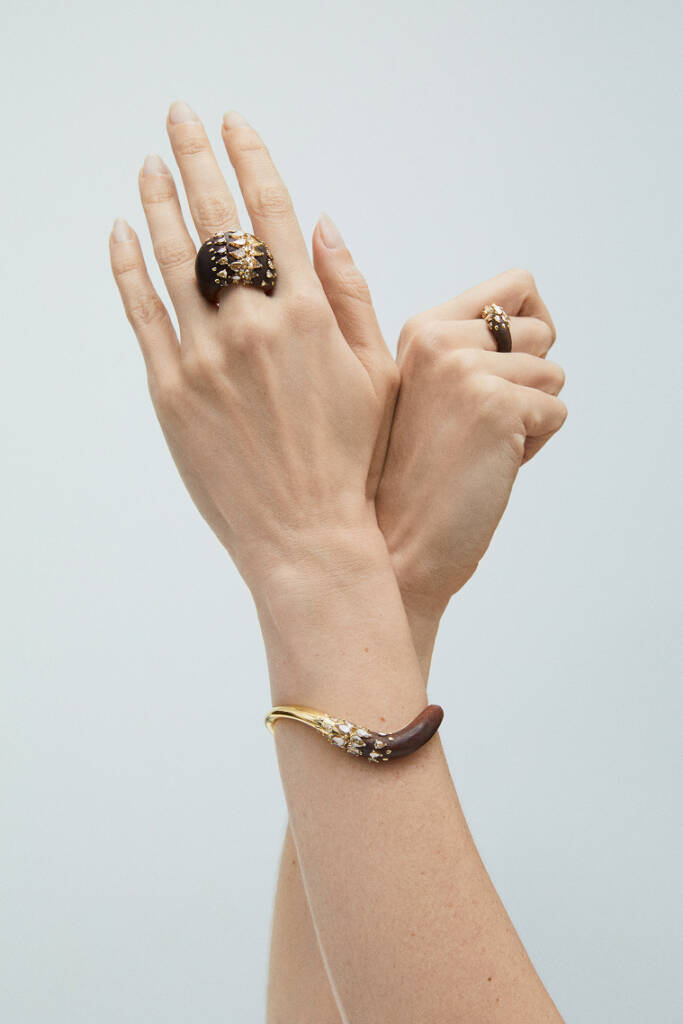
Photography by RORY VAN MILLINGEN


Brazilian-born, London-based jeweller Fernando Jorge launched his eponymous label in 2010, quickly becoming renowned in the world of jewellery designfor his striking sculptural pieces—crafted in Brazil, Portugal, and Italy. Jorge’s designs have been worn by cultural icons including Beyoncé, Viola Davis, Michelle Obama, Saoirse Ronan, and Naomi Watts, gracing the red carpet and distinguished galleries alike with an epitomized display of methodical craftsmanship and natural sensuality.
In 2019, Jorge opened his first private showroom, a space in São Paulo as consciously envisaged as his pieces themselves, with designs curated to spotlight the work of Brazilian artists. Since then, Jorge has launched two more spaces of the same kind in New York and London, working closely with Studio Mellone—each catering to the places they stand in. Ever in tune with the world around him, Jorge’s most recent collection, Vertex, embraces the physical structure of the diamond, conceiving an energetic momentum waiting to be found.
hube: Where does your inspiration arrive from, and where do ideas begin for you—in a place, a feeling, a memory? Some creatives speak of inspiration as a kind of visitor—unpredictable, tender, or even demanding. What is your relationship with it?
Fernando Jorge: For me, inspiration feels less like an unexpected visitor and more like a recurring cycle. It’s a rhythm that I’ve come to recognise over the years. My process often begins with a mood—something I start to notice and gather—small, everyday impressions. As I translate those ideas into design, a clearer underlying feeling emerges.
I can only truly begin shaping a new collection once I’ve experienced, touched, and understood the previous one. It’s almost a biological rhythm—not always pleasant, clean or organised, but deeply physical and inevitable. I create as much structure around my practice as possible, but I also allow room for the messiness and unpredictability that is part of the creative process. That balance of structure and chaos is where my ideas take form and what shapes my work.
h: Your work feels like a meditation on contrast—weight and lightness, softness and tension, precision and chance. What draws you to metal as a medium, and how do you see it emotionally, beyond its material value?
FJ: It is great to hear that my work feels like that. I work in a very thoughtful way, never impulsive. The process involves a great deal of editing and paring back until I arrive at a place that holds a balance of opposing ideas. That’s why tension is always present. It reflects my constant attempt to reconcile contrasts, whether they come from life itself or from a particular mood that I’m trying to translate. I’m drawn to metal due to my background in product design, where I first discovered its structural possibilities. Metal is fascinating because it is both malleable and strong—it can be moulded, shaped, cast, or soldered—and yet, it provides the skeleton of an object, a structure that gives permanence. In jewellery, this role becomes even more profound. Gold in particular has qualities that go beyond its material value. It’s physically perfect for use on the body—it doesn’t oxidize, it isn’t allergenic, and it has a warmth both tactile and visual. It feels alive on the skin in a way other metals do not. Over the years, gold has become so intrinsic to my work that it no longer feels like a deliberate choice; it’s simply the language I speak as a jeweller.
h: When you walk through a city—whether São Paulo, London, or Paris—what catches your eye first: materials, silhouettes, gestures?
FJ: The skyline of a city catches my eye first. I’m very much about grasping the whole picture and then looking more closely. I find myself constantly oscillating between stepping back to view the silhouette, and then examining closer to understand on a deeper level. That’s when I start to notice materials, textures and nuances of colour. The movement of the city and its people is generally the final observation. Everything is in perpetual motion, constantly evolving. I try to understand what’s beneath the surface before I take the time to explore the ever-changing life that exists on top of it. It’s silhouettes, then materials and textures, and finally, the rhythm of the life happening all around.

